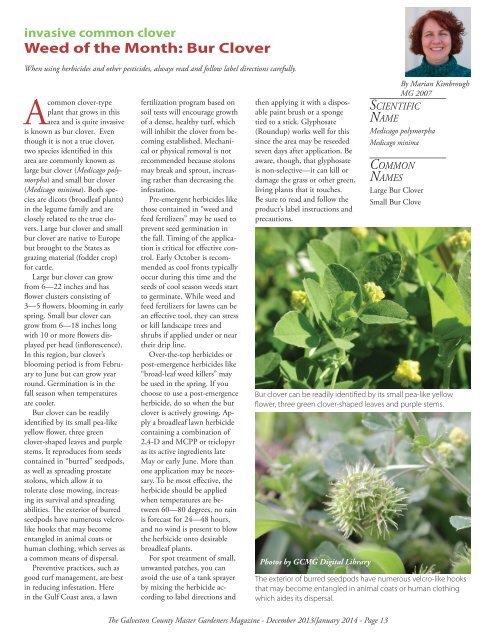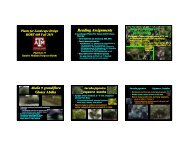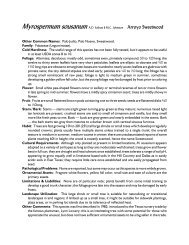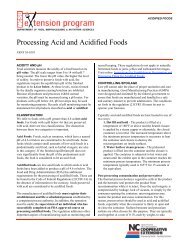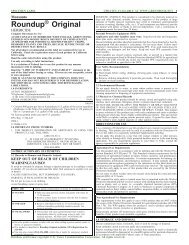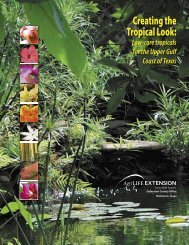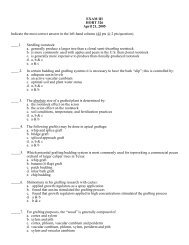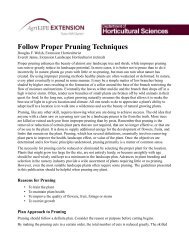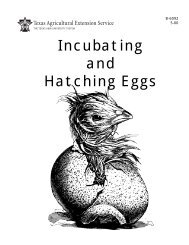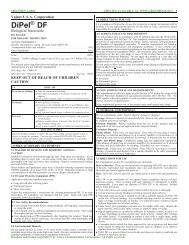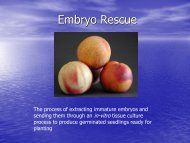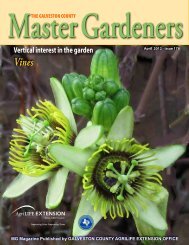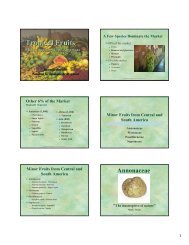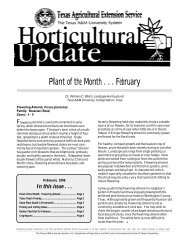Bulb Gardening - Aggie Horticulture - Texas A&M University
Bulb Gardening - Aggie Horticulture - Texas A&M University
Bulb Gardening - Aggie Horticulture - Texas A&M University
Create successful ePaper yourself
Turn your PDF publications into a flip-book with our unique Google optimized e-Paper software.
invasive common cloverWeed of the Month: Bur CloverWhen using herbicides and other pesticides, always read and follow label directions carefully.Acommon clover-typeplant that grows in thisarea and is quite invasiveis known as bur clover. Eventhough it is not a true clover,two species identified in thisarea are commonly known aslarge bur clover (Medicago polymorpha)and small bur clover(Medicago minima). Both speciesare dicots (broadleaf plants)in the legume family and areclosely related to the true clovers.Large bur clover and smallbur clover are native to Europebut brought to the States asgrazing material (fodder crop)for cattle.Large bur clover can growfrom 6—22 inches and hasflower clusters consisting of3—5 flowers, blooming in earlyspring. Small bur clover cangrow from 6—18 inches longwith 10 or more flowers displayedper head (inflorescence).In this region, bur clover’sblooming period is from Februaryto June but can grow yearround. Germination is in thefall season when temperaturesare cooler.Bur clover can be readilyidentified by its small pea-likeyellow flower, three greenclover-shaped leaves and purplestems. It reproduces from seedscontained in “burred” seedpods,as well as spreading prostatestolons, which allow it totolerate close mowing, increasingits survival and spreadingabilities. The exterior of burredseedpods have numerous velcrolikehooks that may becomeentangled in animal coats orhuman clothing, which serves asa common means of dispersal.Preventive practices, such asgood turf management, are bestin reducing infestation. Herein the Gulf Coast area, a lawnfertilization program based onsoil tests will encourage growthof a dense, healthy turf, whichwill inhibit the clover from becomingestablished. Mechanicalor physical removal is notrecommended because stolonsmay break and sprout, increasingrather than decreasing theinfestation.Pre-emergent herbicides likethose contained in “weed andfeed fertilizers” may be used toprevent seed germination inthe fall. Timing of the applicationis critical for effective control.Early October is recommendedas cool fronts typicallyoccur during this time and theseeds of cool season weeds startto germinate. While weed andfeed fertilizers for lawns can bean effective tool, they can stressor kill landscape trees andshrubs if applied under or neartheir drip line.Over-the-top herbicides orpost-emergence herbicides like“broad-leaf weed killers” maybe used in the spring. If youchoose to use a post-emergenceherbicide, do so when the burclover is actively growing. Applya broadleaf lawn herbicidecontaining a combination of2,4-D and MCPP or triclopyras its active ingredients lateMay or early June. More thanone application may be necessary.To be most effective, theherbicide should be appliedwhen temperatures are between60—80 degrees, no rainis forecast for 24—48 hours,and no wind is present to blowthe herbicide onto desirablebroadleaf plants.For spot treatment of small,unwanted patches, you canavoid the use of a tank sprayerby mixing the herbicide accordingto label directions andthen applying it with a disposablepaint brush or a spongetied to a stick. Glyphosate(Roundup) works well for thissince the area may be reseededseven days after application. Beaware, though, that glyphosateis non-selective—it can kill ordamage the grass or other green,living plants that it touches.Be sure to read and follow theproduct’s label instructions andprecautions.ScientificNameMedicago polymorphaMedicago minimaCommonNamesLarge Bur CloverSmall Bur CloveBy Marian KimbroughMG 2007Bur clover can be readily identified by its small pea-like yellowflower, three green clover-shaped leaves and purple stems.Photos by GCMG Digital LibraryThe exterior of burred seedpods have numerous velcro-like hooksthat may become entangled in animal coats or human clothingwhich aides its dispersal.The Galveston County Master Gardeners Magazine - December 2013/January 2014 - Page 13


